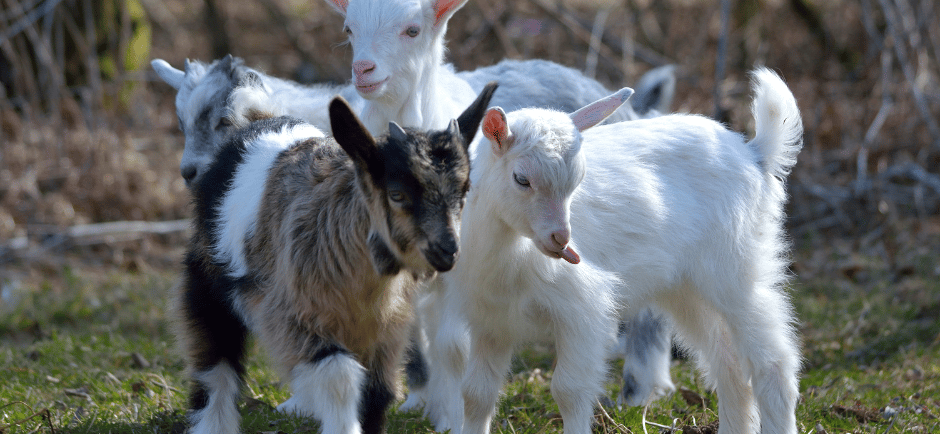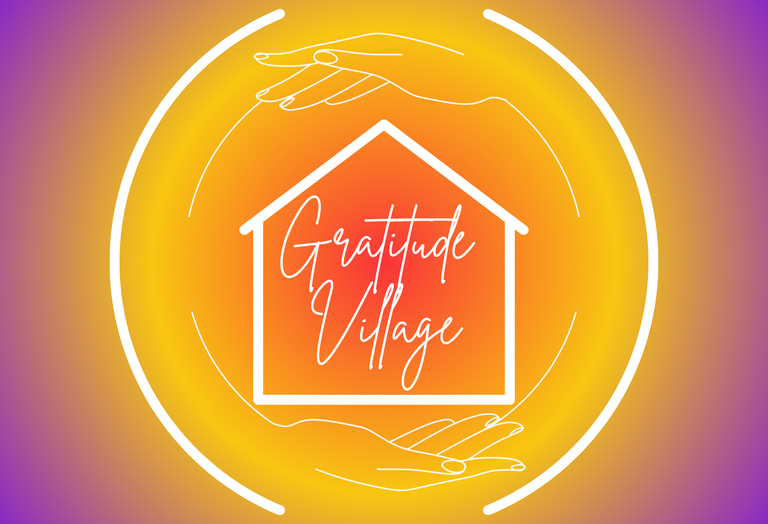Join our next Info Session December 16 from 5:30-6:30 MST Via Zoom (register for link)
Animal Husbandry in Cohousing: Embracing Sustainability and Emotional Wellness
As communities explore more sustainable and eco-friendly lifestyles, cohousing developments are increasingly integrating animal husbandry into their designs. Raising animals such as goats, chickens, miniature cattle, and bees offers cohousing residents fresh, local food, and strengthens community bonds through shared responsibilities. These small-scale agricultural efforts align perfectly with cohousing principles of cooperation, resource-sharing, and self-sufficiency and have the added benefit of enhancing emotional wellness. In this blog, we’ll explore the benefits and challenges of animal husbandry in cohousing, and how the integration of goats, chickens, miniature cattle, and bees can enhance sustainability, food security, emotional wellness and communal living.
Gratitude Village
10/16/20246 min read


Animal Husbandry in Cohousing: Goats, Chickens, Miniature Cattle and Bees
Cohousing developments, known for fostering community, sustainability, and collaboration, are increasingly integrating animal husbandry into their designs. Raising animals such as goats, chickens, miniature cattle, and bees brings fresh, local food to residents and strengthens community bonds. But beyond the practical benefits, there is another key advantage: the emotional and mental health benefits of working and living with animals. We’ll explore how incorporating animals into cohousing enhances sustainability, food security, emotional wellness, and communal living.
Why Animal Husbandry in Cohousing?
Cohousing is about creating a sustainable, cooperative way of life. Adding animal husbandry complements these goals, providing fresh, organic food while promoting self-sufficiency. Caring for animals fosters community collaboration and encourages residents to connect with nature. Living alongside animals also delivers emotional and mental health benefits that improve the overall quality of life in the community.
Key Benefits of Animal Husbandry in Cohousing:
Food Security and Self-Sufficiency: Goats, chickens, bees, and miniature cattle provide reliable, high-quality sources of milk, eggs, honey, and meat. This local, organic food helps reduce reliance on outside suppliers and improves the community’s resilience. Plus, residents have complete control over how the animals are raised and cared for, which is key for those who prioritize ethical food production and sustainability.
Sustainability and Waste Reduction: Chickens and goats consume food scraps, and all the animals produce manure that can be used as fertilizer for community gardens. Bees pollinate plants, enhancing fruit and vegetable production, while goats help with natural landscaping and weed control.
Emotional and Mental Health Benefits: Studies have shown that spending time with animals can reduce stress, improve mood, and provide a sense of connection and purpose. The daily rituals of feeding, caring for, and simply interacting with animals offer invaluable emotional support to cohousing residents.
Strengthening Community Bonds: Sharing the responsibility of caring for animals promotes collaboration among residents. Whether it's collecting eggs, feeding goats, or tending to the beehives, residents work together, enhancing community ties. This teamwork creates a sense of ownership and pride, especially for children, who can learn valuable life skills through hands-on animal care.
The Emotional and Mental Health Benefits of Living with Animals
In addition to practical benefits, living and working with animals offers significant emotional and mental health advantages. Animals can provide comfort, reduce stress, and create opportunities for mindfulness and connection, which are vital for mental well-being. Here's how animals in cohousing can positively impact residents' emotional health:
Reducing Stress and Anxiety: Spending time with animals has been proven to lower stress levels and reduce anxiety. The rhythmic act of milking a goat, collecting eggs from chickens, or simply observing bees at work in the hive can create moments of calm and mindfulness. Animals provide a non-judgmental presence that can ease the pressure of daily life, making cohousing a more peaceful environment.
Boosting Mood and Mental Health: Animals can lift spirits and provide comfort to people in times of stress or sadness. The mere presence of animals is known to release oxytocin, often called the “love hormone,” which enhances feelings of well-being. Residents may experience increased happiness and reduced symptoms of depression by regularly interacting with animals. This is especially beneficial in communal living, where people of all ages and backgrounds can benefit from this boost to their mental health.
Building a Sense of Purpose and Routine: Caring for animals adds a sense of purpose and responsibility to daily life. Feeding, grooming, or simply spending time with animals provides structure and meaning. For children, it teaches empathy, patience, and responsibility. For adults, the routine of animal care offers a way to stay grounded, with a tangible sense of accomplishment. This can be particularly helpful for those experiencing stress or mental fatigue.
Encouraging Physical Activity: Animals like goats, chickens, and even bees require active participation, which encourages residents to get outdoors and engage in physical activities like walking, feeding, cleaning enclosures, or tending to plants in the regeneration zones. These tasks not only keep residents physically active but also improve mental clarity and emotional health through exposure to nature and fresh air.
Strengthening Social Connections: Caring for animals is often a shared responsibility in cohousing communities, fostering collaboration and social interaction. Feeding schedules, caring for animals, and sharing the products like eggs or honey become collective tasks that bring people together. This creates opportunities for social bonding, as residents work toward a common goal, contributing to a sense of belonging and reducing feelings of isolation.
The Animals: Goats, Chickens, Miniature Cattle, and Bees
Let’s take a closer look at the animals that can enrich cohousing communities and contribute to residents' well-being.
Goats - Goats are fantastic additions to cohousing communities. Known for their versatility, they produce milk that can be used for drinking, cheese-making, or even homemade soaps and lotions. Additionally, goats are natural grazers, helping maintain the landscape by clearing overgrown areas. Goats are also friendly, curious animals that can lift the spirits of those who interact with them. Many find joy in simply watching goats play or in the ritual of milking them, creating moments of mindfulness. Goats require minimal space but do need secure fencing to prevent them from wandering. Their friendly demeanor makes them easy to care for, and they can thrive in both rural and semi-urban environments.
Chickens- Chickens are popular in cohousing for their ability to produce fresh eggs daily. They also provide natural pest control, foraging for insects, which reduces the need for pesticides in gardens. Chickens also serve as low-maintenance pets that provide emotional comfort. Watching them scratch and forage is both relaxing and grounding, and caring for chickens offers a gentle, nurturing activity. Another major benefit of raising chickens is their contribution to composting. Their nitrogen-rich droppings are a valuable addition to the compost, improving the soil for gardening. A small flock of chickens can easily be managed in most cohousing developments, even with limited space.
Miniature Cattle - Miniature cattle offer a more space-efficient alternative to traditional cattle, making them ideal for cohousing communities with smaller pastures. Breeds like Dexter or Jersey miniature cattle can provide milk for dairy products or meat for those who consume it. Their manure is also a valuable resource for community gardens, acting as a natural fertilizer that supports organic farming efforts. Their gentle, calm demeanor can have a soothing effect on residents. Raising miniature cattle requires more space and effort than chickens or goats, but for communities committed to self-sufficiency, they offer long-term benefits. Their larger-than-life presence in a small, manageable size makes them a popular choice for communities seeking the benefits of cattle without the need for vast pastures.
Bees - Bees are vital for both food production and environmental sustainability. By keeping bees, cohousing communities not only harvest honey, beeswax, and propolis, but they also play a critical role in supporting local ecosystems through pollination. Bees naturally pollinate the community’s gardens and nearby plants, boosting the yield of fruits and vegetables. This increased crop production strengthens the community’s food supply, while also contributing to the health of the local environment. In addition to honey, bees produce wax and propolis, which can be used for various homemade products like candles and cosmetics. Additionally, bees offer a unique mental health advantage. Beekeeping requires patience and mindfulness, as it involves slow, intentional movements and observation. Residents involved in beekeeping often find it meditative, while the end result—honey—provides sweet rewards for the entire community. Some beekeepers have even harnessed the calming effect of the bees in bee huts that would be a unique, wellness addition to a cohousing community. Beekeeping is a relatively low-maintenance endeavor, though it does require some knowledge and regular inspections to ensure the health of the hive. In return, the community gains a valuable pollinator and a sustainable source of honey, further enhancing their self-sufficiency.
Challenges and Considerations
While animal husbandry in cohousing offers numerous benefits, it also presents challenges. Communities must carefully plan for the space, resources, and time required to care for animals. Zoning regulations must also be considered, as some municipalities may restrict the types or numbers of animals allowed. One of the primary challenges is the equitable distribution of labor. Caring for animals is a daily commitment that requires time, consistency, and a coordinated effort among residents. If responsibilities aren't clearly defined, some individuals may feel burdened with more work than others, which can create tension within the community. Additionally, there are financial considerations, such as the cost of building and maintaining proper enclosures, purchasing feed, and managing veterinary care. Zoning laws and regulations may also restrict the types or numbers of animals that can be kept, adding a layer of complexity to the planning process. Noise, odors, and potential conflicts with neighbors (inside and outside the community) are additional factors to manage. Ensuring that the community has clear systems and agreements in place for sharing the responsibilities of caring for living creatures along with clear guidelines for animal welfare, health care, and enclosure maintenance and that all members are on board with the idea and level of involvement of animal husbandry, are essential for success.
Animal husbandry in cohousing is about more than just sustainability and food production; it’s also about emotional well-being. By raising goats, chickens, miniature cattle, and/or bees, cohousing communities can foster a more connected, peaceful, and fulfilling way of life. The mental health benefits of caring for animals—such as reduced stress, improved mood, and a sense of purpose—are vital contributors to the overall health of the community. With thoughtful planning and shared responsibility, animals can enhance both the sustainability and emotional richness of cohousing life.
COMMUNITY
Join us in embracing nature, diversity and connection.
Sustainability
DIVERSITY
info@gratitudevillageco.com
720-689-4821
© 2025. All rights reserved.
AFFORDABILITY
Gratitude Village Inc. is a 501(c)3 charitable corporation that values diversity, equity, and inclusion as essential to our mission
Subscribe to our Substack
Refund Policy




Gratitude Village is a Proud Member of these organizations
